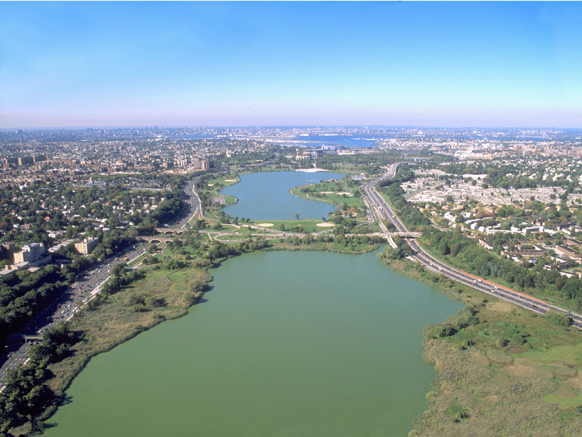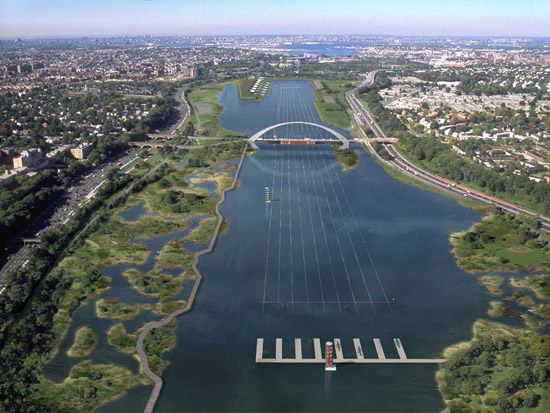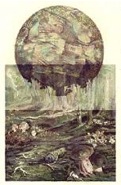
Flushing Meadows Lakes and Watershed Restoration
The Gaia Institute recently released its ecologically engineered design of the 2,000-meter rowing course to the 2012 Olympic Proposal Committee. Presently, the Twin Lakes of Flushing Meadows are subject to severe anthropogenic eutrophication and are unable to sustain any sort of biodiversity. Application of this proposed design would create an ecologically sustainable habitat that would support native plant species, migratory birds, and aquatic life within four times the present wetland area.
Water is the life-support medium of natural systems in the terrestrial biosphere. Three structural features of the twin lakes in Flushing Meadows negatively impact the quality and quantity of water:
-
•The area is ringed by roadways that discharge pollutants into the lakes and cause significant habitat disruption.
-
•Large quantities of stormwater are diverted out of the watershed, reducing the flow of the “life’s blood” of all natural systems. Less water flowing in means a reduced flushing rate in terms of throughput, as well as less water to support plant communities.
-
•High nutrient content in the underlying sediments from the historic salt marsh is compounded in Meadow Lake by the grassy water’s edge, which attracts geese that deposit droppings, adding yet more nutrients to the water.
Water and air quality may be enhanced around Flushing Meadows by increasing the structural diversity, area, and mass of natural systems that come into contact with the water and air in this watershed. Therefore, three steps towards the enhancement of ecosystem services are possible:
Structural diversity: Filtration capacity depends not only on surface area, but also on filter surface complexity. From cotton to fiberglass to activated carbon, all good filters have complicated surfaces. Different kinds and shapes of trees, shrubs, herbs and grasses acting in concert are a better filter than any one type of structure by itself. Similar structural diversity below ground increases the infiltration rate and filtration capacity of the zone where thousands of root hairs, humus and minerals in the soil create the rhizosphere. Together, these living and non-living components are a much more powerful water and air purifying matrix than either kind on its own.
Filter area: The footprint of a forest, meadow, and wetland must be increased in order to favorably impact water quality.
Hydroperiod: Holding water for a greater time in contact with natural (biogeochemical) filters increases their effectiveness removing nutrients, hydrocarbons, pathogens, and heavy metals.
The "Ecological Engineering and Restoration Study: Flushing Meadows Lakes and Watershed" can be downloaded from the links below:
Flushing Meadows
Lakes and Watershed Restoration


(Photo: View of Meadow and Willow Lakes in their highly eutrophied state today)
(Photo: Rendering of ecolocially restored Twin Lakes, Flushing Meadows Park, and 2,000 meter Olympic rowing course)


The Gaia Institute - 440 City Island Avenue - Bronx, NY 10464
